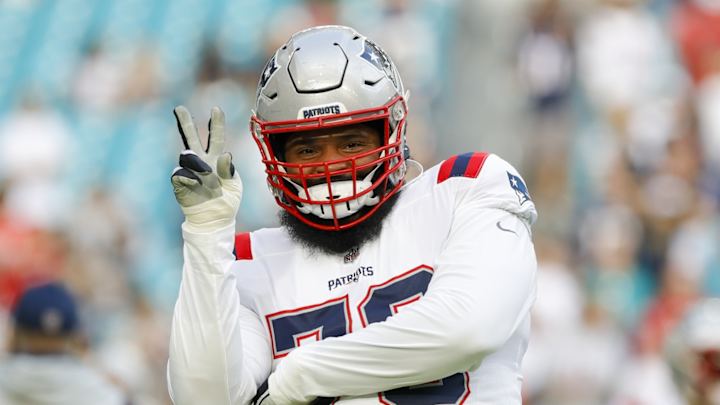Kelly: Examining the State of the Offensive Line

There’s no shame in building an offensive line with castoffs and reclamation projects.
It’s not the ideal way to do it, but can we stop acting as if anything the Miami Dolphins have tried the past two decades to build a healthy offensive line has worked, or had staying power?
There are three traditional ways to build an offensive line in the NFL, and most teams marry a few of these approaches.
There’s the draft route, selecting offensive linemen early and hoping they play like first- or second-rounder, or one of the draft’s top 100 talents.
There’s the free agent route, throwing a bag of money at Pro Bowl talents like Terron Armstead to get them to join your team.
And then there’s the developmental route, which usually relies on a good coaching staff growing a line made up of late-round draftees, castoffs from other teams, and reclamation projects.
The Dolphins have tried to climb up this mountain every possible way twice the past decade with mixed results.
For the sake of transparency, the fact that Miami’s trench play remains an issue after all these years is the biggest wart on General Manager Chris Grier’s tenure as the organization’s top decision-maker.
Not all of the franchise's O-line struggles are his fault seeing as how Mike McDaniel is his third head coach since being named general manager in 2016, and during those eight seasons the offensive line has had nine — that’s three short of a dozen — position coaches.
THE DOLPHINS' RECENT DRAFT HISTORY WITH OFFENSIVE LINEMEN
But it doesn’t help that only two (Laremy Tunsil and Robert Hunt) of the nine offensive linemen the Dolphins have drafted since Grier's reign began in 2016 have established themselves as legitimate NFL starters.
The jury is still out on Austin Jackson, a first-round selection in 2020, and Liam Eichenberg, a second-round pick in 2021, but it doesn’t help that both of these penciled-in starters are considered the weakest links on Miami’s most troublesome unit.
That’s part of the reason Miami has leaned on the second wave of free agency to help patch up the unit, signing Isaiah Wynn and Cedric Ogbuehi this week to supplement the unit’s depth and possibly compete for starting spots.
Both Wynn and Ogbuehi have starting experience, which likely will come in handy considering how watered down Miami’s offensive line got last year because of numerous injuries.
And more importantly, they each have the pedigree of being a former first-round pick.
That means a team once viewed each as a talent who potentially could anchor an offensive line.
Somewhere in their NFL journey, they hit a rough patch and the team that drafted them threw in the towel. And in Ogbuehi's case, maybe there's more than one franchise that explored the lineman's talent and then felt they could do better.
That’s why Wynn is here following an injury-plagued career with the New England Patriots, as a castoff, reclamation project at the ripe age of 27.
“This is a whole new chapter,” Wynn said Tuesday at the conclusion of his first on-field session with the Dolphins. “(The story) just started getting written. You gotta stay tuned to the 'Win with Wynn' story."
Wynn just wants to compete and fit in where he can with the Dolphins. He'll play wherever he's needed.
The same can be assumed for Ogbuehi, whom the Jets re-signed this offseason, then discarded last week after adding Carter Warren with a fourth-round pick and signing veteran Billy Turner.
Ogbuehi, a first-round pick back in 2015, has played both right and left tackle, starting 35 of the 67 NFL games he’s played for five different teams.
Last season the 31-year-old started five games at both left and right tackle for an injury-decimated Jets offensive line.
He’s the definition of journeyman rethread, a castoff looking to extend his career. But there should be no shame about it.
In fact, I love when players have a scent of desperation.
THE MORE CAPABLE OFFENSIVE LINEMEN, THE BETTER
And based on what we’ve seen from Eichenberg and Jackson the past two seasons, neither has proven he's a sure thing.
So why not add talented athletes, open up the competition, and may the best five linemen serve as Tua Tagovailoa’s bodyguards.
The one thing I like about this approach is it could fortify depth, and that’s important considering the Dolphins were forced to patch up last year’s offensive line with practice squad talents and waiver wire finds.
This time last year Larnel Coleman, a 2021 seventh-round pick, and Greg Little were sharing the left tackle duties while Armstead sat out the offseason program and most of training camp rehabbing a knee injury.
Wynn and Ogbuehi, who collectively have 75 starts between them, should clearly be an upgrade over last year's duo.
Their experience matters, and who knows what they can become in their second and sixth acts, respectively, in the NFL.
We won’t learn if they’re a good fit for the wide zone blocking scheme the Dolphins utilize on running plays until the pads come on, and body collisions of these 300-pounders become real.
Still, the additions of Dan Feeney, another offseason signing, the re-signing of Geron Christian and Kendall Lamm, and the selection of former Michigan starter Ryan Hayes in the seventh round should provide the Dolphins offensive line the depth to weather numerous storms that come during a season when injuries water down an offensive line.
The key to this time of year is finding out which players are keepers, and beginning the chemistry building.
“Every other position you rotation,” Wynn said. “Those five guys up front (are who you roll with]. They stay consistent throughout the game. That continuity is big. From the coaching aspect you take whatever that coach is giving you. The task, the job. You just have to compete.”
Compete as if your NFL future depends on it, because it likely does.
